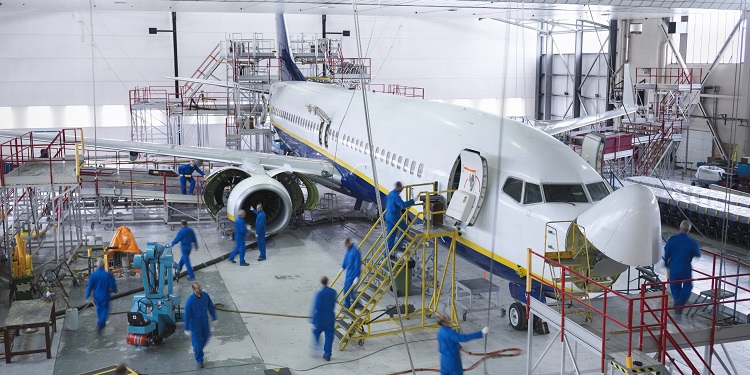It’s happened to so many of us: we book a flight, make sure our luggage meets airline standards, head to the airport early to get through security, and when we reach the gate, the flight is canceled due to weather. Unfortunately, weather is the most significant cause of flight delays, and severe weather events are becoming more frequent and unpredictable.
Read More: 20 ways smarter asset management paves the way to more sustainable operations
Unforeseen storms, floods, wildfires and temperature changes, all exacerbated by shifting climate patterns, are critical problems for the airline industry. When freak storms hit, they threaten to inconvenience or harm travelers and ground crew, keep planes grounded and delay flights indefinitely. Preparing for these events is costly, and false alarms are bad for the bottom line and for customer satisfaction.
The aviation industry needs as much information about severe weather events as possible to understand how storms will affect their craft and personnel. Many airlines are looking to invest in proactive systems that can alert teams about severely dangerous conditions, helping them decide when to hold flights and when it’s safe to resume operations.
Even long-range forecasts provide information just three to five days out, which still leaves most airlines in a reactive space when it’s critical to be proactive. New predictive analytics technology provides the aviation industry with a better way to understand aberrant weather and respond faster to otherwise unforeseen environmental conditions.
Better technology reduces disruption
Better predictive analytics allows aviation operators a future view of the weather based on climate data. By looking beyond the immediate forecast, operators can anticipate events and plan ahead for cost-effective safety.
In the U.S., for example, Tornado Alley is moving eastward due to climate change, disrupting lives that were historically safe from that type of weather event. During this new shifting tornado season, an aviation operator using reactive weather forecasting technology will be able to shut down operations quickly. But an operator using environmental intelligence can understand where the most severe tornados may form next. They may have facilities on high alert from the beginning of the season, build those facilities with future climate patterns in mind, or even avoid new investment in high-risk areas.
This long-term thinking is just as crucial for building sustainability and reducing the industry’s significant emissions footprint. Aviation leaders recognize that sustainability and efficiency are the leading opportunities for growth, the best chance to stand out from their competitors, and vital for the long-term health of the industry.
Using enhanced environmental intelligence for improved safety
Environmental Intelligence (EI) uses the power of artificial intelligence to improve responsiveness to unpredictable weather conditions for the benefit of employees, guests, aircraft and facilities. The technology provides environmental data and forecasting capabilities to deliver greater insight into what weather is coming and how it might affect departure and arrival times, runway direction, grip and ramp movement, towing, and more. Ultimately, the technology allows aviation operators to be proactive and make long-term decisions that change from season to season instead of day to day.
One exemplary aviation leader is Sheltair, the nation’s largest privately-owned aviation network. Sheltair prioritizes safety and has earned ISBAH and NATA Safety First certifications at all of its bases. To further build its operational resiliency, the company added the IBM Environmental Intelligence Suite (EIS) to its FBO operations network-wide. Using this technology, Sheltair can better monitor disruptive environmental conditions, flooding, and even air quality, receiving alerts when dangerous weather is detected.This technology allows Sheltair to plan for the unavoidable, respond quickly to protect employees and customers from injuries caused by adverse weather conditions, detect high-risk weather events and mobilize facility and maintenance teams in advance to prevent damages to assets.
In a future where only change is certain, every part of the aviation industry needs to move from short-term reaction to long-term action.
Source: ibm.com






0 comments:
Post a Comment